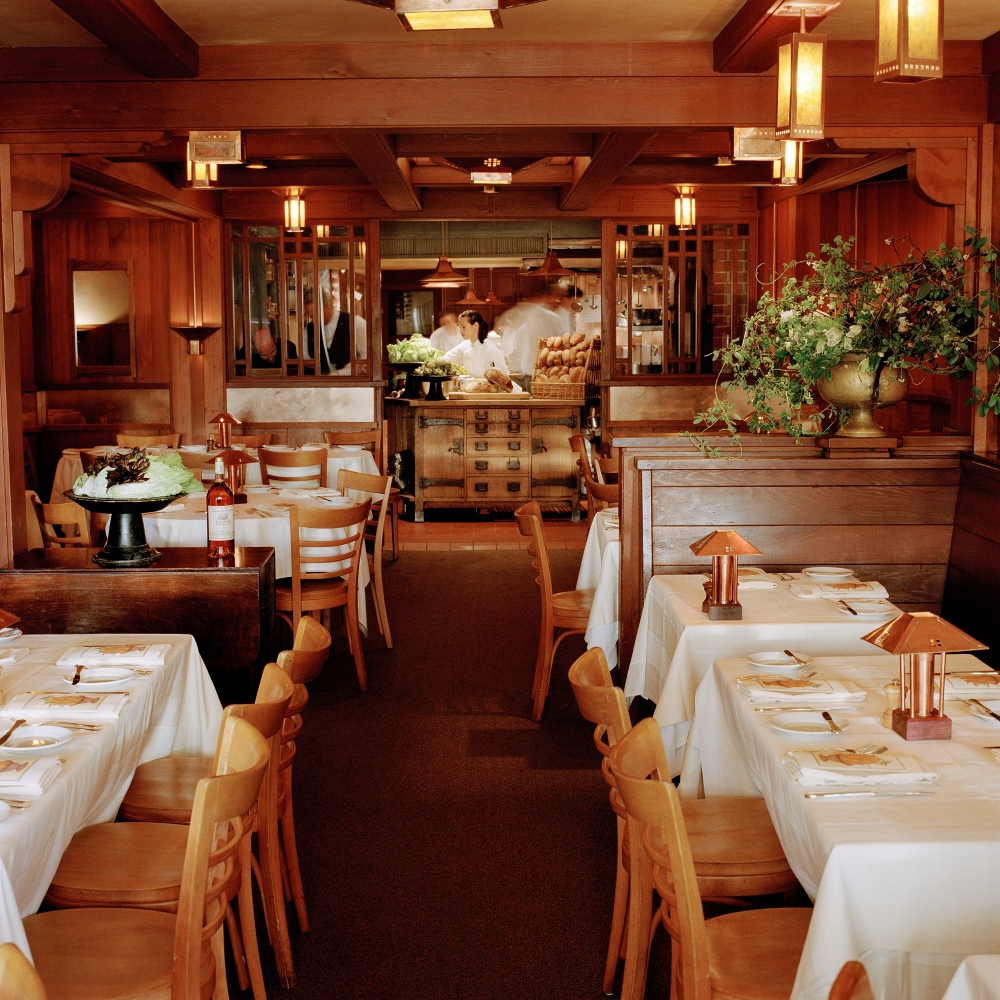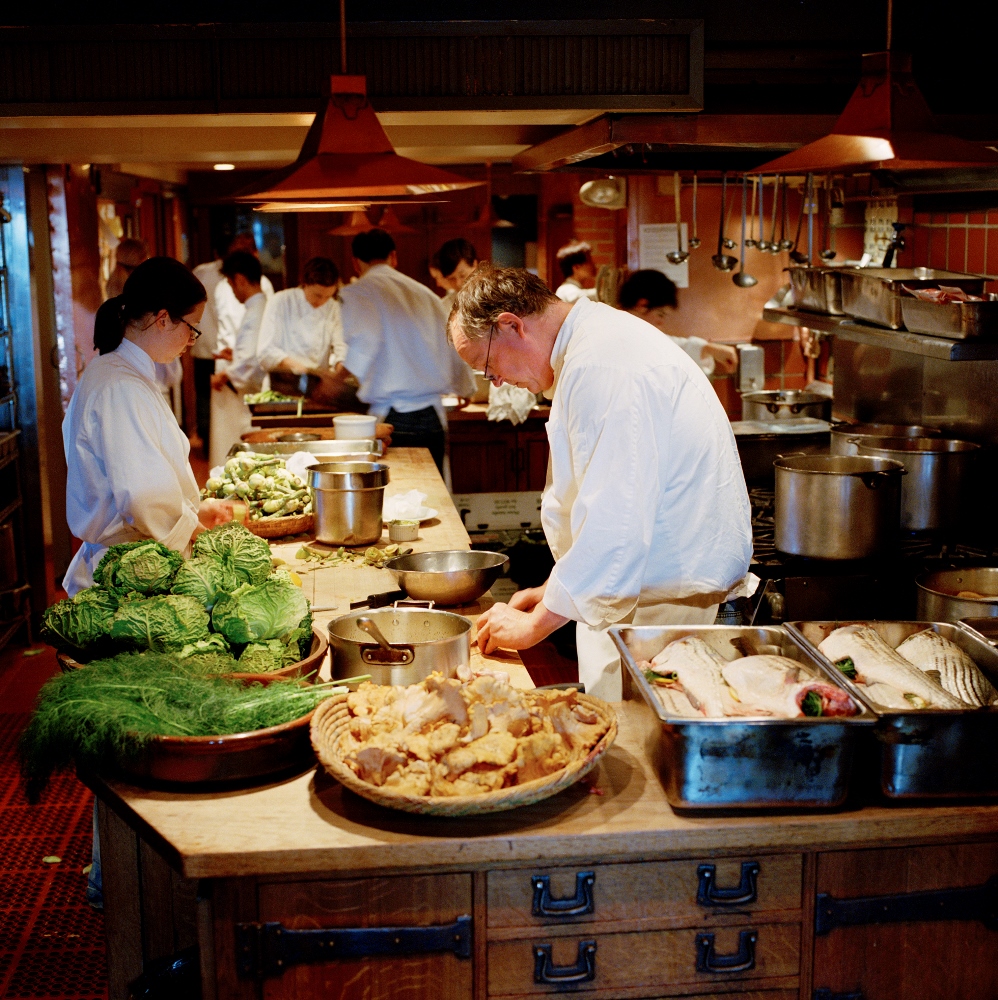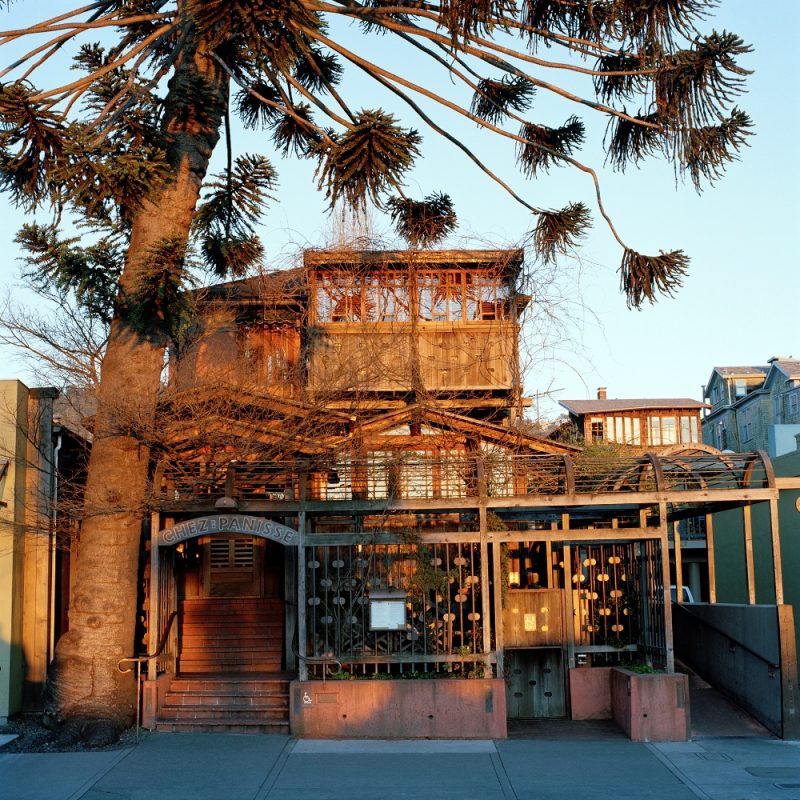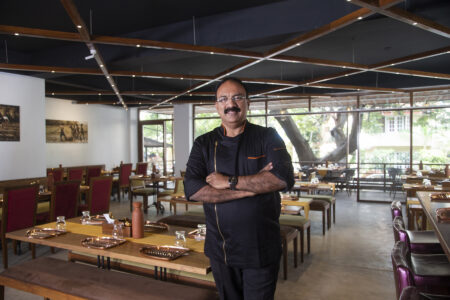How is it possible for a restaurant to capture and hold the imagination of the world for over forty years, I wonder, as I sit at a table? Glorious, late June Berkley sunlight flashing off windowpanes will linger endlessly in the sky, in what seems a typically Chez Panisse sort of evening of good food, hospitality and celebration. The very first thing that strikes me, as I look around, is the utter lack of self-consciousness – of the staff, the chefs and the diners themselves – for a restaurant as famous as this one. Everyone appears to be immersed in whatever it is they are doing, and thoroughly enjoying it. “This is not a real restaurant,” said James Beard, of this modern legend that stands for so much more than just a place where people gather to eat good food, a statement that rings true even now. 
The menus at Chez Panisse, works of art in themselves, are always in a state of flux and have been, ever since the restaurant started, guided each day by the quality of the ingredients available. This evening, we are to dine off shaved vegetable salad with purslane –the gourmet weed- and tapenade; roasted squid en bourride with chickpeas and fennel; saddle of Elliot Ranch lamb; and roasted black mission figs with a warm crepe and anise ice cream. Having read entire volumes on Chez Panisse and travelled half way across the world to be here, there is such a weight of anticipation and high expectations, that my first few forkfuls are tentative, fearful. But I need not have worried. It is one illuminating mouthful after another, a sense of ease, of nothing contrived and yet the awareness that someone has worked very hard to place the best on the plate before you. The roasted squid is so perfect, that in itself would have sufficed to satisfy the taste buds for the evening. It is impossible to exaggerate the rightness of textures and flavours that are presented – a mouthful of tomatoes reminds you of what you seem to be missing every day of your life; there’s a sweetness in the roasted figs that you have never encountered before. As dining goes, I have dined finer, but rarely better. Every dish is a distillation of so much thought, discussion and reflection amongst a group of professionals who work in an atmosphere of camaraderie, where every one of them contributes to the finished product. In the words of an ex-chef, “the motivation generated a fantastic atmosphere of creativity and collaboration,” and that’s what we experience on the plate.
For generations of us who have seen the ‘seasonal, local, organic’ mantra promoted by every restaurant worth its menu, it is impossible to understand just how exotic Alice Waters’ vision seemed in 1970’s Berkley. If you follow her story, it is one of an impossibly distant dream, slowly and painstakingly built up into an extraordinary movement, helped along by a certain serendipity that lent it a wonderful ease and joyfulness, reflected in the food, and the ambience of her iconic restaurant. And it is this philosophy, universal in its simplicity that inspired me to look back at my own roots, cooking and farming traditions, to re-evaluate them.  The kitchen is a fairly narrow open space, easily accessible to diners. Through the evening we take a large number of photographs of the intense activity within this area. I am completely overwhelmed by the patience, generosity and serenity of the staff, completely immersed in their work, unperturbed by our efforts to capture the evening, taking time to answer questions and explain details. There’s bread, fresh from the oven, larger than life figs being sliced, cakes and tarts being prepared for other occasions, so temptingly good, they make us wish they were on the menu. Chef Jerome Waag, who guides us through the kitchen, is very generous with his time and speaks, in some ways for the team and the web of relationships and friendships that Alice Waters’ philosophy has nurtured from the earliest days. Brought up in the South of France on the classic Provençal cooking of his mother, Nathalie, a close friend of Waters, he travelled to the United States in 1991 and, has been associated with the restaurant in one way or another, ever since.
The kitchen is a fairly narrow open space, easily accessible to diners. Through the evening we take a large number of photographs of the intense activity within this area. I am completely overwhelmed by the patience, generosity and serenity of the staff, completely immersed in their work, unperturbed by our efforts to capture the evening, taking time to answer questions and explain details. There’s bread, fresh from the oven, larger than life figs being sliced, cakes and tarts being prepared for other occasions, so temptingly good, they make us wish they were on the menu. Chef Jerome Waag, who guides us through the kitchen, is very generous with his time and speaks, in some ways for the team and the web of relationships and friendships that Alice Waters’ philosophy has nurtured from the earliest days. Brought up in the South of France on the classic Provençal cooking of his mother, Nathalie, a close friend of Waters, he travelled to the United States in 1991 and, has been associated with the restaurant in one way or another, ever since. 
The story and creation of Chez Panisse, from its intensely personal beginnings, to the movement that grew and touched the lives of hundreds of thousands of people and inspired many more, is presented in a book, Forty Years of Chez Panisse, in the voices of many of the people who contributed to the legend. Speaking of her experiences in France, in 1965, Alice Waters wrote:” I began to appreciate how food anchored life to the land and to the seasons, and I began to dream of showing all this to my friends in Berkley.” Everywhere there are small accents, references to a movement that began in this very restaurant, and spread across the United States. There is a still life of beautifully ripe vegetables that keeps us connected to the farms from where all our food travels to the table. An arrangement of purple figs catches the eye; an extravagantly beautiful composition of flowers – for which Chez Panisse is known; patterned, old -fashioned china, all drawn together with seeming effortlessness, creating an atmosphere of ease and comfort. And on our plates, a constant reminder of a simple, but often neglected fact – that unforgettably good food is possible with an attention to the quality of the ingredients we choose with which to make it.
Chez Panisse, inspired by the cooking and lifestyle of Southern France, named after a character in a Marcel Pagnol novel is the creation of a woman who lives her dream and when we dine here, we are privileged to share in it.
At Chez Panisse was published in Food Lovers Magazine, Vol.6, Issue 5, October/November 2012.
Image Credits: Courtesy Chez Panisse




